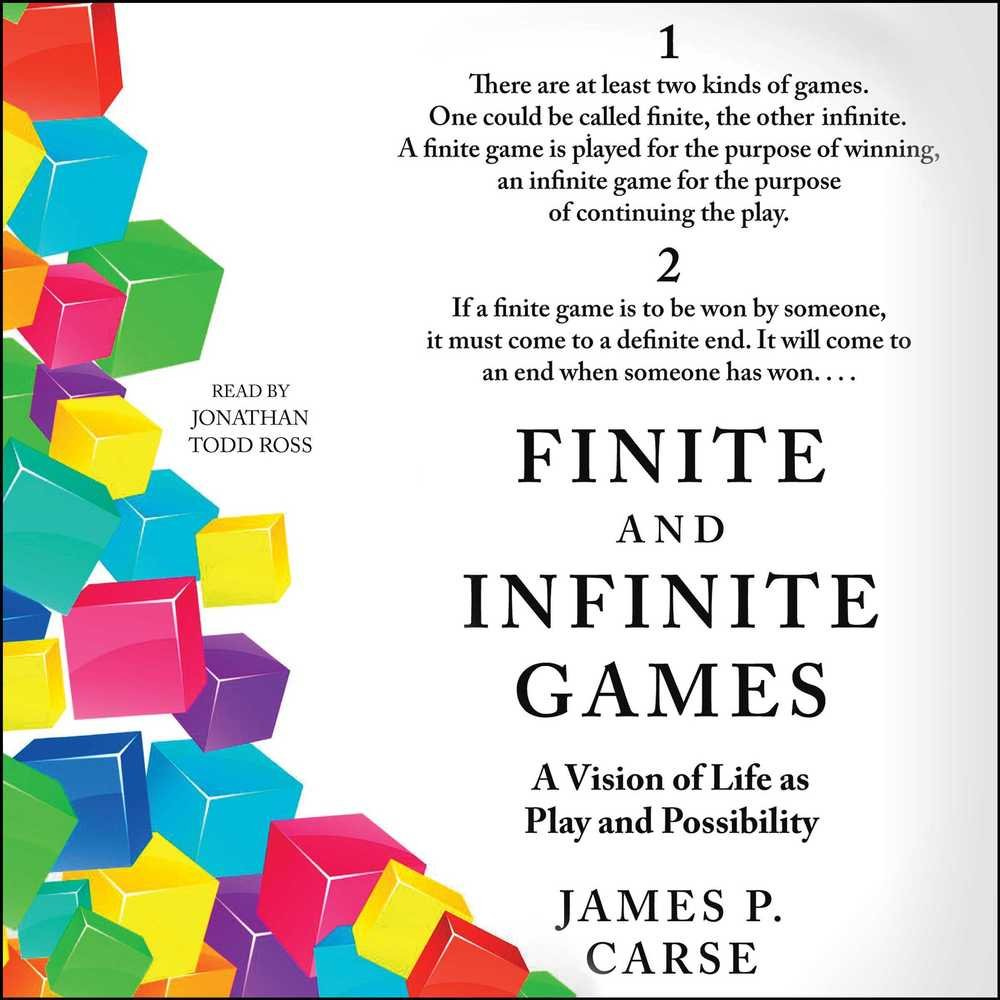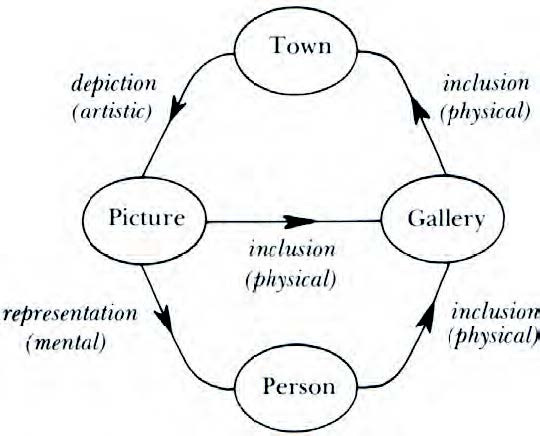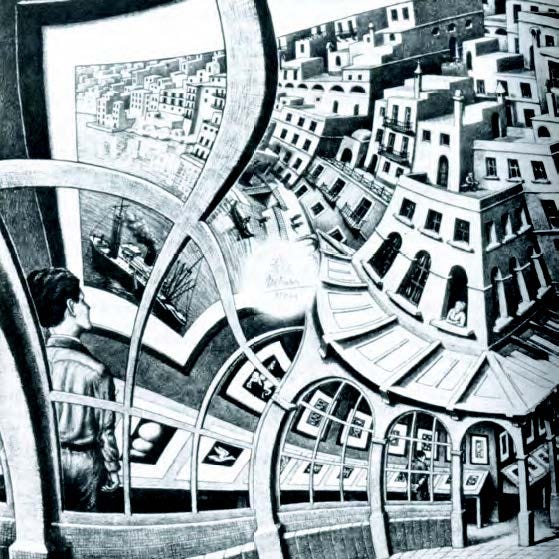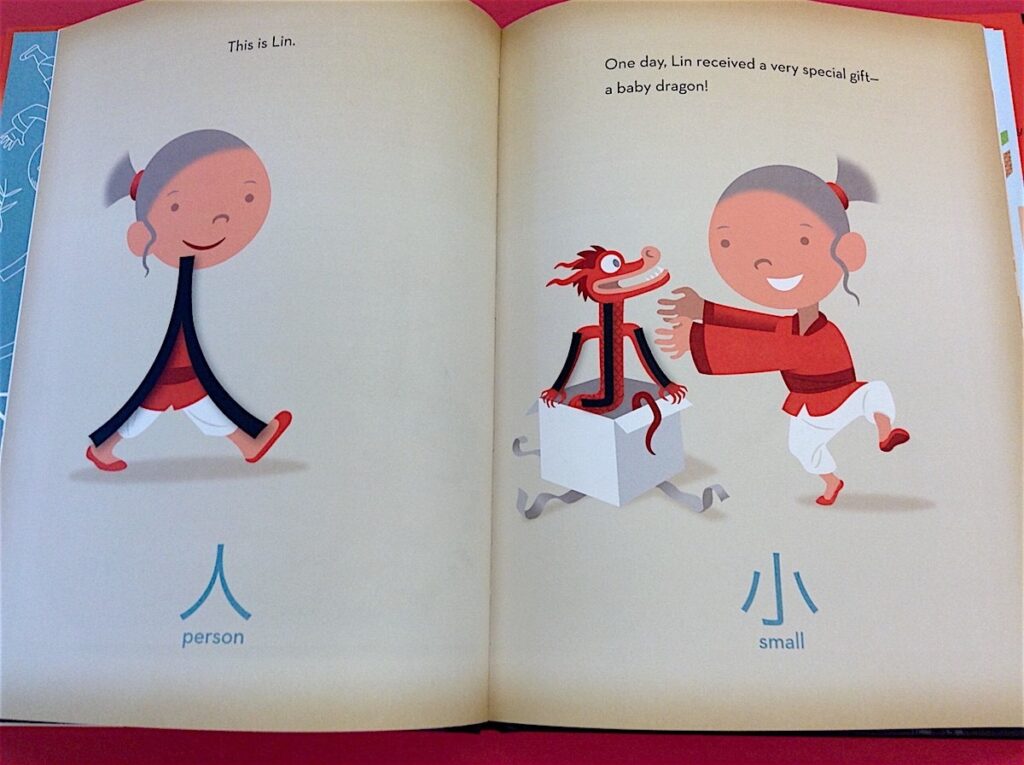Paradox
Tools for Possibilities: issue no. 58
Once a week we’ll send out a page from Cool Tools: A Catalog of Possibilities. The tools might be outdated or obsolete, and the links to them may or may not work. We present these vintage recommendations as is because the possibilities they inspire are new. Sign up here to get Tools for Possibilities a week early in your inbox.

The recursive point of view
At the bottom of reality lies a paradox: selfcreated creation, either the universe or God. This conundrum of selfcausation afflicts all life and consciousness and great art. Occasionally the recursive nature of our existence is captured by a simple witty loop. Here is a fine collection of hundreds of highly evolved self-cancelling/self-generating circuits, called oxymoronic. This handsome and intelligent book is classic cybernetics. I use these witticisms as meditative koans. — KK
- An oxymoron has been wisely described as “a compressed paradox.” Looking at it the other way around, I think of a paradox as “an extended oxymoron.” To me, they’re close cousins because they both link up contradictory or incongruous elements. And they both play around in the most fascinating way with the difference between literal truth and figurative truth. For this reason, I include both oxymoronic and paradoxical observations (and a few others, as you shall soon see) under the rubric of oxymoronic.
- The superfluous is the most necessary. — Voltaire
- Always remember that you are absolutely unique. Just like everyone else. — Margaret Mead
- I shut my eyes in order to see. — Paul Gauguin
- We learn from history that we do not learn from history. — Georg Hegel
- We are never prepared for what we expect. — James Michener
- To be believed, make the truth unbelievable. — Napoleon Bonaparte
- The final delusion is the belief that one has lost all delusions. — Maurice Chapelain
- When a dog runs at you, whistle for him. — Henry David Thoreau
- What we really want is for things to remain the same but get better. — Sydney J. Harris
- Always be sincere, even if you don’t mean it. — Harry S. Truman
- Man can believe the impossible, but can never believe the improbable. — Oscar Wilde
- War is a series of catastrophes which result in a victory. — Georges Clemenceau
- First I dream my painting, then I paint my dream. — Vincent van Gogh
- We are confronted by insurmountable opportunities. — Walt Kelly, From Pogo
- A man chases a woman until she catches him. — Anonymous
- I want peace and I’m willing to fight for it. — Harry S. Truman
- Study the past, if you would divine the future. — Confucius, in Analects
- Love is a kind of warfare. — Ovid
- All works of art should begin…at the end. — Edgar Allan Poe

How to live
The wisdom held in this brief book now informs most of what I do in life. Its key distinction– that there are two types of games, finite and infinite– resolves my uncertainties about what to do next. Easy: always choose infinite games. The message is appealing because it is deeply cybernetic, yet it’s also genuinely mystical. I get an “aha” every time I return to it. — KK
- A finite game is played for the purpose of winning, an infinite game for the purpose of continuing the play.
- Finite players play within boundaries; infinite players play with boundaries.
- To be prepared against surprise is to be trained. To be prepared for surprise is to be educated.
- The death of an infinite player is dramatic. It does not mean that the game comes to an end with death; on the contrary, infinite players offer their death as a way of continuing the play. For that reason they do not play for their own life; they live for their own play.
- I can be powerful only by not playing, by showing that the game is over.
- Infinite players do not oppose the actions of others, but initiate actionsof their own in such a way that others will play by initiating their own.
- Evil is the termination of infinite play.
- No one can play a game alone.
- There is but one infinite game.

Strange loops
I consider this one-of-a-kind book to be the seminal introduction to our age, to this axial moment in the history of our species when we rediscovered the centrality of the nonmaterial — information, ideas, bits, knowledge, rationality and thought. All these make the material abundance celebrated here in the book you are reading. Yet we have no idea (that word again!) what these non-materials really are. It was the author of this astounding book who first made it very clear with wit and riddles that each of these things are not-things yet they make things, and that each was comprised of a necessary paradox, a strange loop that produced something from nothing; and furthermore, these strange recursive loops underpin everything we find interesting and important in the world, from nature, art, mathematics, machines, intelligence, consciousness to life itself. If there will be born a new religion in this era sprung from this language of the emergent, we will be its gods, and this will be its gospel. — KK
- At the core of dualism, according to Zen, are words — just plain words. The use of words is inherently dualistic, since each word represents, quite obviously, a conceptual category. Therefore, a major part of Zen is the fight against reliance on words. To combat the use of words, one of the best devices is the koan, where words are so deeply abused that one’s mind is practically left reeling, if one takes koans seriously. Therefore it is perhaps wrong to say that the enemy of enlightenment is logic; rather, it is perception. As soon as you perceive an object, you draw a line between it and the rest of the world; you divide the world, artificially into parts, and you thereby miss the Way.

Here is a short section of one of the Crab’s Genes, turning round and round. When the two DNA strands are unraveled and laid out side by side, they read this way:
TTTTTTTTTCGAAAAAAAAA .AAAAAAAAAGCTTTTTTTTT.
Notice that they are the same, only one goes forwards while the other goes backwards. This is the defining property of the form called “crab canon” in music. It is eminiscent of, though a little different from, a palindrome, which is a sentence that reads the same backwards and forwards. In molecular biology, such segments of DNA are called “palindromes”— a slight misnomer, since “crab canon” would be more accurate.

Abstract diagram of M.C. Escher’s Print Gallery

A strikingly beautiful, and yet at the same time disturbingly grotesque, illustration of the cyclonic of a Tangled Hierarchy is given to us by Escher in his Print Gallery. What we see is a picture gallery where a young man is standing, looking at a picture of a ship in the harbor of a small town, perhaps a Maltese town, to guess from the architecture, with its little turrets, occasional cupolas, and flat stone roofs, upon one of which sits a boy, relaxing in the heat, while two floors below him a woman perhaps his mother gazes out of the window from her apartment which sits directly above a picture gallery where a young man is standing, looking at a picture of a ship in the harbor of a small town, perhaps a Maltese town — What!? We are back on the same level as we began, though all logic dictates that we cannot be. Let us draw a diagram of what we see. What this diagram shows is three kinds of in-ness. The gallery is physically in the town (inclusion); the town is artistically in the picture (depiction); the picture is mentally in the person (representation).
10/30/23




















